In 1995 I wrote my first book The Wind At Work, a history of windmills, and sent it to Chicago Review Press. They liked it, but replied that all their children’s books include activities. Would I be willing to write some? Would I!
Creating activities was fun, relating windmills to science, creative writing, drawing and painting, sewing, cooking, singing, environmental research, and community action. Who knew?
Researching way back then
All this took place back in the Dark Ages, AKA pre–internet.
To research the book I read books and more books, using local and university libraries, interlibrary loans, and used bookstores. I traveled to the Netherlands, the American Midwest, and a wind turbine factory. To find photographs, paintings, etchings, and the like I searched through books. I visited and/or wrote to historical societies, the Library of Congress, tourist sites, and libraries. I received originals and photocopies and then sent purchase and permission letters, all by snail mail. And finally I sent off packages of photographs, slides, drawings, etc. to the publisher, all printed on paper!
In those
I am currently in the thick of telling a story visually. What do I mean by that? The text of Courage Has No Color is nearly done, and now it is time for me to choose the images that will add additional layers of meaning to that text. It is not at all as simple as choosing photographs to illustrate something I have said. That is what I used to think I was doing when gathering images and writing captions. But I have learned over the years that it is much, much more than that. It is an opportunity to tell MORE of the story. To elaborate, both with an image and with its caption, upon an aspect of the story that did not necessarily belong smack dab in the middle of the text. It can be distracting to the narrative to go off on an interesting-yet-not-crucial point. That is one of the many powerful uses of visual storytelling.
 For example, if I wanted to show how television had a powerful impact on how we saw women in society in the 1950s, but didn’t want to veer off my beaten track with a lengthy description, I can (and did, in Almost Astronauts) show this quite effectively using images from Father Knows Best, the Mary Tyler Moore Show, and I Love Lucy. Looking at photographs also stirs ideas in me about what the images do NOT show as well as what they do show. This classic photo may conjure heroic images of America’s fearless astronauts to most people, but what I saw in this photo when collecting images for Almost Astronauts was what was NOT represented. The road not taken. The opportunity missed. The women in my story whose tale needs to be told.
For example, if I wanted to show how television had a powerful impact on how we saw women in society in the 1950s, but didn’t want to veer off my beaten track with a lengthy description, I can (and did, in Almost Astronauts) show this quite effectively using images from Father Knows Best, the Mary Tyler Moore Show, and I Love Lucy. Looking at photographs also stirs ideas in me about what the images do NOT show as well as what they do show. This classic photo may conjure heroic images of America’s fearless astronauts to most people, but what I saw in this photo when collecting images for Almost Astronauts was what was NOT represented. The road not taken. The opportunity missed. The women in my story whose tale needs to be told.
It is the same for my newest book (Courage Has No Color) about the Triple Nickles. I continue to see what is—and sometimes more tellingly what is not—in the hundreds of photos I am looking through. I don’t just look at them; I listen to them. They speak to me. What are the images saying? What pops out at me that needs attention; that needs a voice? What more of the story is lurking in these photos, waiting for me to tease out and add to the overall narrative in the form of images?
This is my job, and I love it so, so much. I believe it is this love that makes my hands stop on one photo rather than another and take a closer look. What will I find? I can’t wait to find out!
Welcome to the World by Valerie Wyatt. Photographs by Lennette Newell. 2011. Kids Can Press. 24 pages.
Dear Baby,Welcome to the world and all its wonders. You will feel the sun on your skin and be warmed by it. You will see light chase darkness as clouds pass by. You will hear the wind in the trees and feel cool raindrops. You will see flowers in bloom and smell their sweet scent...If you love looking at lovely photographs of babies, then you may enjoy this little picture book. The photographs are lovely. I could look at photos of babies all day long. There's just something adorable and sweet and precious about it all. The text itself is a 'welcome' message of sorts, introducing babies (supposedly) to the world around them. There is a strong emphasis on nature.
This one is not a board book. It is a 'delicate' book in that its pages could be ripped by young hands. So your audience needs to be young enough so that they are not reaching and grabbing or chewing and sucking. OR old enough that they know how to treat books well--gently.
I don't think the text of this one is 'entertaining' enough for preschoolers to appreciate or enjoy.(Because the text isn't a story so much as it is a sentimental letter.) Though of course that depends on YOUR child. I think the text may appeal more to adults--because it means
something more to adults.
Text: 2 out of 5
Photographs: 4 out of 5
Total: 6 out of 10
© 2011 Becky Laney of
Young Readers
My phone rang last month and a smokejumper was on the other end. “I’m jumping this week, lots of blazes, but I got your message and I’ll find a way into that safe for you even if we have to crack it open.”
I had been waiting for this call for weeks. It all started with a cold call to a guy named Steve who knew a lot about the history of smokejumping—including the period of time when the paratroopers I am writing about worked for the Forest Service as smokejumpers. This guy was an absolute wealth of information, and he ended up sending me interview transcripts and knowing just whom I should talk to.
One of the guys Steve sent me to was Wayne. Wayne was equally enthusiastic and genuinely excited to talk with me. With Wayne I hit the photographic jackpot—almost. He told me an incredible story that resulted in a big orange carrot dangling in front of my nose.
One day, as he was busy manning the jump station, a man came up to him, handed him a manila envelope, said there were priceless pictures inside the Forest Service should have, and walked away. When Wayne had a chance to look at them, he knew immediately what they were, and stashed them in the safe in his office for, you guessed it, safekeeping.
Time went by and Wayne retired. The photos, he realized when we were talking, must still be in that safe—which no one had opened for years. “Call Dan (his successor) and tell him Wayne said to find the combination to that old safe and get those photos for you.”
Okay—I had a location, information, and a plan. The first time I called Dan he was out on a jump. The second time, too. I left a message that must have sounded crazy, to the effect of ‘you don’t know me, but the guy who worked in your office before you left some photos in a safe and he wants you to get them for me.” I didn’t know if I would ever hear from him.
It took a while, what with Dan being kind of tied up smokejumping into blazing forest fires, but he did call me back. He also promised that he would find the combination of the safe in his office. A week later came the bad news that no one seemed to know where that combination was, and the safe was so old and tough it was looking like it would be a big job to break into it by force. Still, he told me not to worry. He’d get the job done. Firefighters are like that.
Not long after, Dan had more news for me. They still hadn’t located the combination, but he had discovered the photos had been digitally scanned at some point. A CD was on its way to me! Some time after that, a package arrived in the mail. On that CD were a few old images I had seen before, but instead of the old blurry, many-photocopied, hard-to-reproduce versions I kept finding, these were crisp and clear and bright. Better still, there were a few images I had never seen before. Jackpot!
These are the kinds of detective trails that need to be found and followed for just a handful of photographs that will end up in my forthcoming book, Courage Has No Color.
There are many more photo stories where that came from. Sometimes these chases turn out to be of the wild goose variety; sometimes they are sheer gold.
Thank you Steve, Wayne, and Dan!
In 2006 I watched British chef Jamie Oliver's 4-part BBC documentary, "Jamie's School Dinners," in which he interviewed children and found that many didn't know the names of vegetables. As a girl who grew up picking vegetables on her grandparent’s farm, that shocked me. I had to do something.
I’d already been worrying about childhood obesity because of my work as a visiting author in schools; I see about 17,000 school kids each year. I’ve noticed that some audiences are sluggish, having a tough time brainstorming, asking questions, and responding quickly and creatively. It just seems like they’re not feeling good. These audiences also seem to have the highest numbers of kids struggling with obesity, and the worst time to speak with them is soon after a greasy school lunch.
After watching the BBC show, I wondered, how could these kids change their eating habits? How could they find, choose, or prepare healthy foods such as vegetables if the entire vegetable aisle was a foreign country to them?
I knew from my work, and from my previous chant books, that kids can easily learn new words if they are in a chant form. Then, when kids are out in the world and they see a chant word, they connect with it. Perhaps I could do something in this small way.

Rah, Radishes: A Vegetable Chant (Beach Lane Book/S&S, release June 14, 2011) is about having fun with vegetables—and with delicious words, colors, and shapes. I photographed the book at our local South Bend Farmer’s Market over the course of four years. The farmers are so excited about the book. (They know which carrot or celery is theirs!)
Once kids read the book, I hope they'll have vegetable names, colors, and shapes in their heads. Perhaps they'll stop and actually point at a potato, laugh at a rutabaga, try broccoli for the first time.
Of course, this book is just a tiny piece of what needs to be done to help kids have healthier lives. So many people are putting their hearts and hands into the work of providing kids with better food choices. My hope is that folks doing this important work will find the book—and any joy and conversation it sparks—helpful in their efforts.
I've been remiss in posting here the last few weeks. A shortage of both time and focus are to blame, I'm afraid. Last January (2012) God let me know that the focus of my life in 2012 will be my family; the first four months of this year have verified that message for me. Please pray for me as God sends family matters my way, that I will handle them with grace, love and joy.
I have been able to
 Ahh… the perplexing rules of picture permission. Every freelance writer should have at least a basic understanding of photography permission forms and when to use them. When pictures are included with prose the burden of rights and permissions falls to the writer/photographer, not the editor.
Ahh… the perplexing rules of picture permission. Every freelance writer should have at least a basic understanding of photography permission forms and when to use them. When pictures are included with prose the burden of rights and permissions falls to the writer/photographer, not the editor.
As with any written law, the guidelines can seem both vague and complex. Two things to remember:
- Law definitions can be much broader than your own understanding of them.
- Cover your you-know-what.
It is my intent to offer you enough information to assist you in the most common circumstances. If you plan on taking writer/photographer assignments on a regular basis I encourage you to do a little more research; that’s my disclaimer—I’m not an attorney and am not attempting to offer legal advice. :)
Pictures of People:If the people are not identifiable—not the focal point of the picture—and the picture is to be used for editorial/informational purposes you do not need a permission release.
Exceptions:- The people are posing or otherwise made the focal point of the picture.
- The picture will be used for advertising purposes (brochures, etc…)
- There are children in the photograph.
- There is someone in “trade dress” such as a circus performer.
- The person is a celebrity. We won’t get into that but the rules are different for them.
A note about children:
Anyone under 18 years of age must have a permission form signed by at least one parent or guardian.Schools and other organized groups generally have standard forms. Read these carefully, they may cover the organization but not necessarily the photographer.
Pictures of Property:You may take pictures of houses, buildings, cars, etc… while standing on public property. However, be sure that the owner of the property can not be identified by the picture. Again, if the shot is for editorial purposes you should be fine. If it is for promotional purposes, get a property permission form signed.
Cautions:- If the icon on the vehicle is visible you may have copyright issues with the manufacturer.
- Trademarks on buildings are copyrighted and the buildings themselves may belong to another company or individual.
What do I do with the signed permission forms?Keep them—forever. It is a good idea to make notes on the back of the form that will remind you as to which form goes to which picture. When you get back to your office print a copy of the picture on plain paper and attach it to the permission form.
Where do I find permission forms?Photo release forms are available online at:
Free Legal Documents
http://www.free-legal-document.com/photography-contracts.htmlUSLegal
http://www.uslegalforms.com/The American Society of Media Photographers
http://asmp.org/tutorials/forms.htmlandand other similar sites.
By Robyn Chausse
The Sun Will Return
(c) by Mary Nida Smith
WIND OF CHANGE
©By Mary Nida Smith
I live the life
of constant motion
like the wind
changing directions
never sustaining
one emotional direction.
I listen
to the directional
mood of the wind.
I stay calm
allowing God
who created me
to blow me calmly
in the right direction.
I listen
I watch
I stay happy
For I will move
when the wind
blows me
where
I have never been
It isn’t every day that a TV award show inspires a whole new direction in one’s artistic life, but a few years ago, that’s what happened to me. I was watching the Independent Spirit Awards, that hip and laid-back paean to independent cinema celebrated annually the evening before the Oscars. During the program, several up-and-coming filmmakers won grants to finish their work and one of them, a woman, invited “anybody out there who has something to say” to embrace the medium of film to say it. Her words didn’t exactly send a lightning bolt to my brain, but a small, possibly 60-watt bulb did switch on. I’d always used photographs to tell the stories in my books, but should I explore using video?
Since I’d never even used a video or movie camera at that point, my first step was to determine how serious I was about this new outlet. After due consideration, I decided to buy a video camera, with some advice from people in the know. I choose a Canon that uses tapes, rather than one that stores everything on an internal hard drive, because it somehow felt better to have evidence of my movie shoots that I could hold in my hand and store as backup. With memories of my dad’s 8-millimeter camera from the 1950s in my head, I was astonished at the exquisite technology that’s now available to anyone with a few bucks. Skill, however, is another story.
I got my feet wet by shooting footage of a friend’s birthday party at a bowling alley, then did some video oral histories with my dad and the father of another friend. Concurrently, I started taking One-to-One lessons at the Apple store, learning how to use iMovie software to edit the footage I shot. Making movies in this way is hugely empowering—something that millions have discovered before me, as evidenced by the fact that people upload hundreds of thousands of videos onto YouTube daily, according to the site’s Fact Sheet. Well, better late than never.
As much as I enjoy the act of capturing movement and sound, I have a constant internal dialogue going on about whether to use my still or video camera. Sometimes video is an obvious choice. Still pictures of my once-in-a-lifetime attempt at karaoke in 2009 would not have the same entertainment value as the video footage that my friend and I shot. (Though those who watched the video might have appreciated the silence of a dramatic photograph of me at the mike.) But I like the ability of a still photo to communicate both information and mystery at the same time. When I look at a photograph, I wonder what happened j
[Before taking on this subject, I’d like to thank Barbara Kerley. Her September 9 blog, “An Old Dog, A New Trick,” was the push I needed to go to the bright side, to go Mac.]
I recently participated at a media specialist conference in Florida, where I heard a number of interesting presentations by our fiction writing colleagues. Gayle Forman when she writes she hears the voices of her characters. We nonfiction authors do that, too, of course, but there’s an additional step. First, we must search out real characters, alive or dead, and then find ways to integrate them into our heads. At least that’s my process. Nonfiction writers’ search for characters is indeed a long, twisty road.
This subject led me to the master of all character searches, Luigi Pirandello, who I assume reads INK somewhere in the Italian grand beyond.
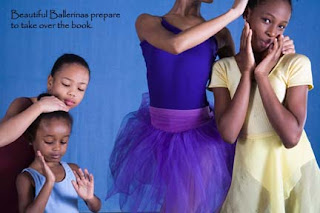
I ask him: Caro Senore Pirandello. Per favore. Your Six Characters in Search of an Author is great theater, but how about some help for us nonfiction writers? After all, we share much in common. Just as your characters take control of your play, people represented in nonfiction literature usually take control of the books right from the start. Primary sources are our bread and butter. For this writer, my primary sources, my people, ARE the book.
The way I work is somewhat logical and somewhat not. Before I meet anyone, I need to understand my subject – just enough to be able to ask decent questions – but not so much as to enable preconceived ideas to drive the book. That’s the characters’ domain. Meanwhile the networking in search of said characters begins.
To network, timidity has no place in the lexicon of nonfiction. We must be tough, just like your pushy six characters, Senore. I’ll call anyone I know who might know someone who might know someone. Emails go out to suggested organizations, and to the friends of friends of friends. Fingers crossed, I await the responses. In the best of all worlds, doors fly open, private intimate materials are gingerly handed over, and the most fascinating, introspective, articulate people whoever walked the planet start talking. Oh-oh, now I’m verging into fiction. Truth-be-told, this doesn’t happen quite so quickly, but hey, this is a blog, and our readers are busy people.
While the hopefully discovered most fascinating person talks, I tape, listen, and watch. Does she lean to the left? To the right? Does his upper lip curl when revealing an inner truth? Is she a blinker? When does he laugh nervously? Also: Am I pushing too hard? Not enough? Asking the right follow ups? This is a balancing act whose high wire is based on trust. It’s extraordinarily exhilarating – when it works.
Up to this point, the interviewees are people, not characters who will take over the book. To become characters, they have to go through me. First, all the tapes, every last word, need to be personally transcribed. While pushing rewind, again and again, their voices slowly begin to creep into my being. Suddenly, their speech patterns become my speech patterns, their body language and movement slowly becomes mine. They attach themselves to my bones and seep into my blood. I literally need to know how it feels to be ze [him or her]. I know, I know, this is more than a little weird, but the creative process is usually weird. [Just watch the anomalous routines baseball players go through at bat.]

One thing that many folks don’t know about me— unless they’ve seen one of my keynotes— is that I am a photographer. I’ve been taking photos since I was 11. Decades of travel have given me a library of 60,000 wildlife and landscape photos from Madagascar to Michigan. But until recently, they only appeared as small spot photos in my book. Words are a passion and I’ve been working professionally mostly in that realm; it wasn’t until scanners and iphoto became available that I could efficiently organize my photo content.
Still, even though I’m now doing several books illustrated entirely with my photos, I’m not sure I’d say I’m a master photographer. I’d say I can get 98% on a photo. Solid focus, composition, inspired subject, and sometimes fortunate timing. But then, there’s that 2%. Ah, that last 2%. That’s what takes time–gobs of time. Most of a photographer’s time.
What does that extra 2% look like? Take a peek at the kingfisher diving photos/article by Andy Rouse. Click on the photos to see larger versions of his exquisite work. The dripping bird clutching the fish. The water droplets. The water entry. Ahhhh. You are there.
http://www.naturephotographers.net/articles0905/ar0905-1.html
That last 2% is what makes a master photographer. That extra boost of quality is what takes the most skill and preparation and dedication. It’s the days/weeks/months spent in those waders, setting up blinds, studying behavior to catch just the right moment. Those photos are nonfiction dreams. They are beauty. I think lots of us, with our fancy digital cameras, great lenses can do such consistent good work that we’ve forgotten what GREAT work is in the photo world.
Sometimes I pause to look at the Outdoor Photographer’s Network (http://www.naturephotographers.net/) just to appreciate what photo artisans on this level can do. The group includes passionate amateurs and professionals; some of the photos are glorious.
What does it take to get that extra 2% in the world of photography? Andy Rouse describes the work he did just to set up and photograph kingfishers on the nest in this article.
http://www.naturephotographe
My post this month is going to be a tad different than usual because I firmly believe that every milestone in this tough business of ours should be celebrated—and that’s exactly what I did last night. Celebrate.
You may think that nonfiction books and a rockin’ party don’t go together—but you would be wrong! Last night was the official launch party for my new book The Good, the Bad, and the Barbie: A Doll’s History and Her Impact on our Culture. And let me tell you, people were In the House to celebrate nonfiction!
The place: Flying Pig Bookstore in Shelburne, Vermont.
The time: 7:30 p.m. on a Wednesday evening.
The crowd: SRO!

Even after a long day of working, shuttling kids to play rehearsals and soccer games, nonfiction aficionados showed up to usher in this newest addition to the Dewey Decimal shelves. There were parents, teachers, librarians, and kids armed with questions (as well as a few Barbie dolls). Who says nonfiction is dead? Phooey!
On hand were Karen Pike--the photographer I hired for the bulk of the interior images--and Peter Harrigan--the theatre professor/Barbie collector who made the photos possible.
The questions from the audience were fabulous. We talked about writing process, how do you know when it’s time to stop your research, and the many, many cultural questions that come up when people start to talk about Barbie.
The question I addressed first seems to be the most frequent and obvious one surrounding the publication of this book. The question posed to me, in its many forms, always comes from this place: “YOU wrote a book about Barbie? Really? Barbie? You?”
Although I actually anticipated and dreaded this questions several months ago, now I really enjoy it. Why? Because the question is at the heart of why any nonfiction writer (any writer, really) chooses to write about a topic—and why they are the right person to tackle it. It opens up all kinds of avenues for thought and discussion.
Yes, I often write what might be called feminist books, or books that have at the heart of them a desire to empower girls. And yes, on the surface, the topic of Barbie seems at odds with that. But that’s what’s so fantastic about immersing yourself in a topic of nonfiction, looking at the back story, discovering the who, what, why, where, and when of a topic, looking at it from all sides and ultimately synthesizing an understanding of it.
I won’t give away what my conclusions are, lest I be accused of treading into Spoiler territory. But I will tell you that every time I answer the question of “Why, why, why, would YOU of all people choose to write about Barbie?” I am rewarded with the facial changes, head nodding, and verbal feedback that indicate I have made a connection with my audience. I have expressed myself. I have initiated a thought process out in the world that leads to discussion.
This is why I write nonfiction. And THAT is definitely something to celebrate.
So come on Barbie, let’s go party!

By: Lauren,
on 9/20/2010
Blog:
OUPblog
(
Login to Add to MyJacketFlap)
JacketFlap tags:
applicants,
documents,
identification,
passport,
Craig Robertson,
passports,
inches,
bearer,
History,
American History,
photographs,
A-Featured,
A-Editor's Picks,
photograph,
ID,
Add a tag
Craig Robertson is an Assistant Professor of Communication Studies at Northeastern University. His new book, The Passport in America: The History of A Document, examines how “proof of identity” became so crucial in America. Through addressing questions of identification and surveillance, the history of the passport is revealed. In the excerpt below we learn about photographs on passports.
On 21 December 1914, Secretary of State William Jennings Bryan issued an order requiring two unmounted photographs no larger than three inches by three inches to be submitted with passport applications – one attached to the application, the second to be put on the passport. Citizens who had been issued passports without photographs were required to have a photograph added. Photographs were introduced to make the passport a more accurate identification document in a time of war. The use of the passport in the name of national security also brought with it an increased concern to make the document more secure. Less than a month after adding photographs to passports, the State Department acknowledged the need to more effectively ensure that the correct photograph was connected to the correct document. When applications were submitted to local courthouses, clerks were now requested to affix photographs to the application with a seal to avoid subsequent substitution of the photograph prior to the issuance of a passport. In Washington and at embassies around the world, officials stamped their seal of their office over the top left corner of the photograph when they attached it to the passport instead of the initial practice of simply pasting it to the document. In addition to being an attempt to secure the passport, the legend made explicit the purpose of the photograph and the authority the legitimized the identification process. The legend stated: “This is to certify that the photograph attached hereto is a likeness of the person to whom this passport is issued. In witness whereof the seal of the Department of State is impressed upon the photograph.” In 1928, as part of continuing attempts to make the passport a more secure document, the State Department began to use a machine that perforated a legend across the lower part of the photograph after it was attached to a passport. This made it more difficult for someone to cleanly remove the photograph, and it was assumed to be more difficult to replicate than the rubber stamp.
All of this effort was necessary because officials considered the photograph to be an authoritative likeness of a person – hence their concern that a substituted photograph would allow someone to easily claim the citizenship and identity the state had intended for someone else. The concern with fraud led officials to employ the relatively less “accurate” identification technologies of the signature and the physical description to further ensure the photograph on the passport was indeed that of the person the State Department had issued the passport to. Officials reduced the categories in the physical description to height, hair, and eyes, but as noted retained the recently added category for “distinguishing marks.” From 1924 applicants had to sign the back of the passport photograph. According to a State Department publication, this signature “provided a written record to identify the rightful bearer in the passport, reduced the possibility of fraud, and insured that the proper photograph was attached to the application and the passport.”
During the 1920s the State Department also clarified its policy to ensure that all passports carried a photograph of the bearer. In 1921 the secretary of
View Next 22 Posts








 Keep your students reading all summer! The lists for 2nd, 3rd and 4th, include 10 recommended fiction titles and 10 recommended nonfiction titles. Printed double-sided, these one-page flyers are perfect to hand out to students, teachers, or parents. Great for PTA meetings, have on hand in the library, or to send home with students for the summer. FREE Pdf or infographic jpeg.
Keep your students reading all summer! The lists for 2nd, 3rd and 4th, include 10 recommended fiction titles and 10 recommended nonfiction titles. Printed double-sided, these one-page flyers are perfect to hand out to students, teachers, or parents. Great for PTA meetings, have on hand in the library, or to send home with students for the summer. FREE Pdf or infographic jpeg.
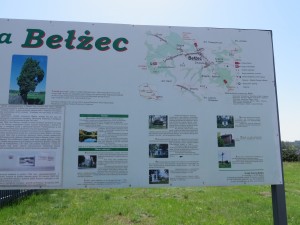

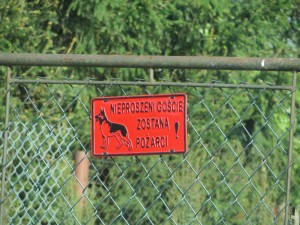
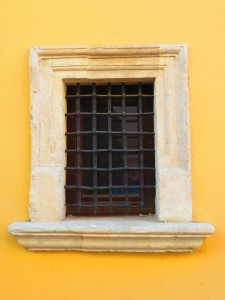


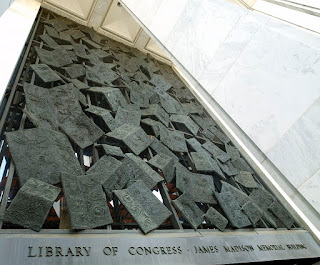

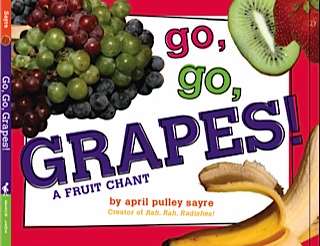








Ann: I envy you your time at the LOC. I hope it's been productive. Of course, we're both lucky to write for a publisher that knows how to use the photographs we find to the best effect, and to have designers and art directors who appreciate them as much as we do. It takes a village....
I love picture research too - not only photos, but what librarians call ephemera: postcards, posters, menus, etc. Those seemingly trivial items that can bring a person or an era to life. And I too am a big fan of LOC's online catalog!
Make Earning on your Every panels you purchase, Many types of Earning Systems
<a href= http://bannersbroker.com/MrSanghani17 A
Wonderful post, Ann! I love that Ernest Withers picture, too. My Uncle Bob knew him back in the day. While researching my latest book I spent countless hours with another of LOC's online treasures, the George Washington papers in the Manuscript Division. What a thrill to read Washington's words in his own hand!